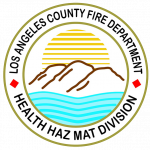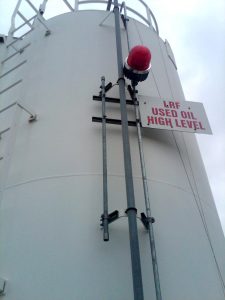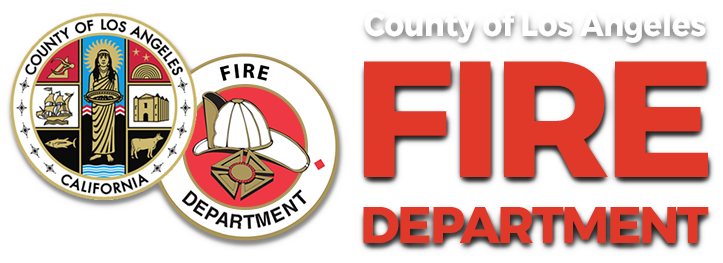
Aboveground Petroleum Storage Tank Program
Assembly Bill 1130 created the Health and Safety Code (H&SC), Chapter 6.67, Sections 25270 through 25270.13, giving Unified Program Agencies (UPA) the authority on January 1, 2008 to administer the APSA program in their jurisdictions.
Applicability
APSA applies to facilities that are subject to the oil pollution prevention regulations specified in Part 112.1 of Subchapter D of Chapter I of Title 40 of the Code of Federal Regulations or that have a storage capacity of 1,320 gallons or the tank facility has a storage capacity of less than 1,320 gallons of petroleum and has one or more tanks in an underground area meeting the conditions specified in HSC §25270.2(o)(1). If this subdivision is applicable per HSC §25270.3, only tanks meeting the conditions specified HSC§ 25270.2(o)(1) shall be included. The total storage capacity of petroleum at a facility is obtained by adding the rated design capacity of each container that can store 55 gallons or more of petroleum.
Examples of petroleum includes crude oil, sludge, mineral oil, petroleum solvents, gas turbine fuel oils, lubricating oils, waste oil, kerosene, soluble cutting and metalworking fluid containing petroleum, inks and coatings containing petroleum, diesel, gasoline, lubricating oils, heating oil, and biodiesel (if it is not 100% biodiesel).
Exemptions
EXEMPTIONS
The following containers are exempted: hazardous waste tanks with a Permit by Rule (PBR) authorization from the CUPA; boilers and pressure vessels; tanks storing hazardous waste permitted by the Department of Toxic Substances Control, crude oil production tanks, underground storage tanks, most oil-filled electrical equipment, transportation-related tank facilities, and permanently closed containers.
CONDITIONALLY EXEMPTED SITES
Farms, nurseries, logging sites, and construction sites are conditionally exempted if no single tank has a storage capacity that exceeds 20,000 gallons and the total storage capacity does not exceed 100,000 gallons. While these facilities are conditionally exempt from the APSA requirement to prepare and implement an SPCC Plan, the conditionally exempt facility owner or operator may still be subject to APSA program fees and APSA State surcharge, Tank Facility Statement/Business Plan submission, conduct daily visual inspections of aboveground petroleum storage tanks, allow the CUPA to conduct periodic inspections of the facility, and install secondary containment for each tank or group of tanks if the CUPA deems it necessary to protect waters of the State.

Reporting Requirements
On or before January 1 of each year, the owner or operator of a tank facility subject to APSA shall submit either a tank facility statement or a business plan that identifies the name and address of the tank facility, the contact person, the total storage capacity, the location, size, age, and contents of each aboveground storage tank that exceeds 10,000 gallons in storage capacity. A complete Hazardous Materials Business Plan submittal is sufficient to meet the tank facility statement reporting requirements as allowed under HSC 25270.6(a)(2).
A separate AST statement is not required if the inventory is reported as part of the annual hazardous materials inventory. However, if the owner/operator does not wish to complete a hazardous materials inventory they will need to return either the tank facility statement or a supplement to their business plan containing the following criteria related to the APSA program elements:
- name and address of the tank facility
- contact person for the tank facility
- total storage capacity of the tank facility
- location, size, and contents of each storage tank that exceeds 10,000

